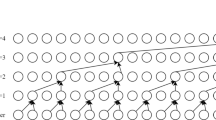Abstract
Telugu language is one of the important languages in the world. The language that is spoken by most of the people in a region is called as dialect. In the recent days, speech recognition system is present in almost all electronic devices. In this, dialects of particular language perform a vital role. The accurate dialects identification technique helps in not only enhancing its features but also expected to provide in modern services in health and telemedicine for older and homebound peoples. Like any other language, even Telugu language has diversified itself into different dialects viz., Telangana, Kostha Andhra, and Rayalaseema. Combination of all the dialects is the language TELUGU and it is a perfect blend of elegance in Sanskrit, sweetness in Tamil along with the essence of Kannada language. The formation of dialects can be of different reasons. For speech processing research, till today there is no standard speech database created for Telugu dialects. In this paper we developed a speech database that can be utilized for the recognition of Telugu dialects and we had applied two modeling techniques that are, Hidden Markov Model (HMM) and Gaussian mixture model (GMM) in order to recognize the dialects of Telugu language by using speech independant utterances. We imposed Mel-Frequency Cepstral Coefficient for extracting the spectral features from the obtained speech data and observed that GMM provides better accurate results than HMM.

Similar content being viewed by others
References
Al-Walaie, M. A., & Khan, M. B. (2017). Arabic dialects classification using text mining techniques. In International conference on computer and applications (ICCA).
Bailey, C. N. (1968). Is there a midland dialect? Washington, D.C.: ERIC Clearinghouse.
Balleda, J., Murthy, H. A., & Nagarajan, T. (2000). Language identification from short segments of speech. In Proceedings of the INTERSPEECH (pp. 1033–1036).
Chen, M., Wang, L., & Xu, C.-Z. (2017). A novel approach of system design for dialect speech interaction with NAO robot. In 18th international conference on advanced robotics (ICAR).
Chittaragi, N. B., & Koolagudi, S. G. (2017). Acoustic features based word level dialect classification using SVM and ensemble methods. In IC3, Noida, 10–12 August 2017.
Grierson, G. A. (1886). Linguistic survey of India (LSI). In Seventh international oriental congress.
Ibrahim, J., & Lestari, D. P. (2017). Classification and clustering to identify spoken dialects in Indonesian. In International conference on data and software engineering (ICoDSE).
Ismail, T., & Singh, L. J. (2017). Dialect identification of Assamese language using spectral features. Indian Journal of Science and Technology,10(20), 1–7. https://doi.org/10.17485/ijst/2017/v10i20/115033.
Ismail, T., & Deka, G.K. (2017). Identification of Kamrupi dialect and similar languages. In 4th International conference on signal processing and integrated networks, SPIN.
Jothilakshmi, S., Ramalingam, V., & Palanivil, S. (2012). A hierarchical language identification system for Indian languages. Digital Signal Process,22(3), 544–553.
Khan, S., Ali, H., & Ullah, K. (2017). Pashto language dialect recognition using mel frequency cepstral coefficient and support vector machines. In International conference on innovations in electrical engineering and computational technologies (ICIEECT).
Mahnoosh, M., & Hansen, J. H. L. (2015). Automatic analysis of dialect/language sets. International Journal of Speech Technology,18(3), 277–286.
Manwani, N., Mitra, S. K., & Joshi, M. V. (2007). Spoken language identification for Indian languages using split and merge EMAlgorithm. In A. Ghosh, R. K. De, & S. K. Pal (Eds.), Pattern recognition and machine intelligence. Editions. PReMI 2007. Lecture notes in computer science (Vol. 4815, pp. 463–468).
Mengistu, A. D., & Melesew, D. (2017). Text independent Amharic language dialect recognition: A hybrid approach of VQ and GMM. International Journal of Signal Processing, Image Processing and Pattern Recognition, 10(1), 215–222.
Mohanty, S. (2011). Phonotactic model for spoken language identification in Indian language perspective. International Journal of Computers and Applications,19(9), 18–24.
Reddy, V. R., Maity, S., & Rao, K. S. (2013). Identification of Indian languages using multi-level spectral and prosodic features. International Journal of Speech Technology,16(4), 489–511.
Roy, P. (2010). Language recognition of three Indian languages based on clustering and supervised learning. In Proceedings of the international conference on computer applications—telecommunications (pp. 77–82).
Sadanandam, M., & Kamakshi Prasad, V. (2013). Automatic text independent language identification using reduct set of feature vectors. In IEEE international conference on fuzzy systems (FUZZ-IEEE). Springer.
Author information
Authors and Affiliations
Corresponding author
Additional information
Publisher's Note
Springer Nature remains neutral with regard to jurisdictional claims in published maps and institutional affiliations.
Rights and permissions
About this article
Cite this article
Shivaprasad, S., Sadanandam, M. Identification of regional dialects of Telugu language using text independent speech processing models. Int J Speech Technol 23, 251–258 (2020). https://doi.org/10.1007/s10772-020-09678-y
Received:
Accepted:
Published:
Issue Date:
DOI: https://doi.org/10.1007/s10772-020-09678-y




